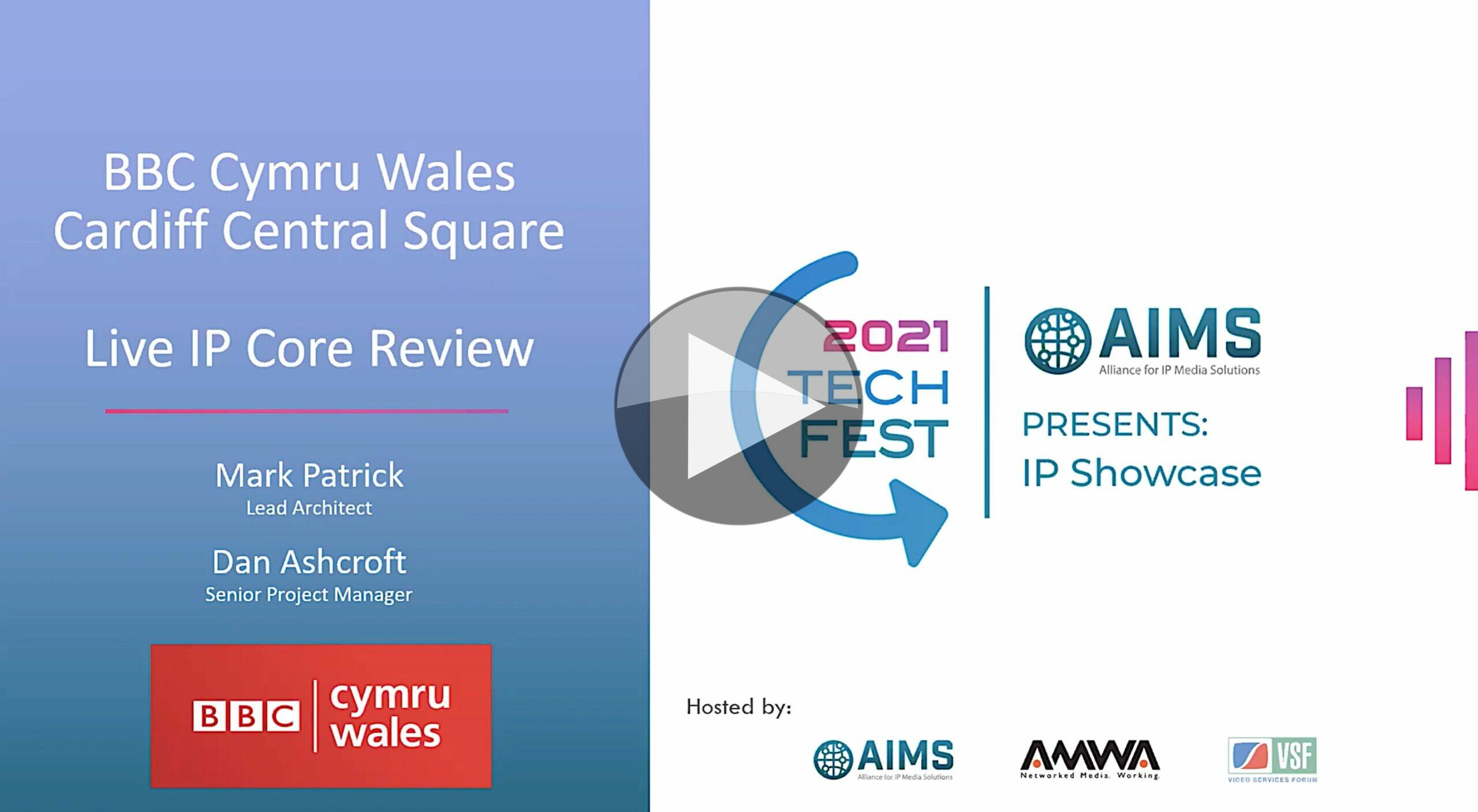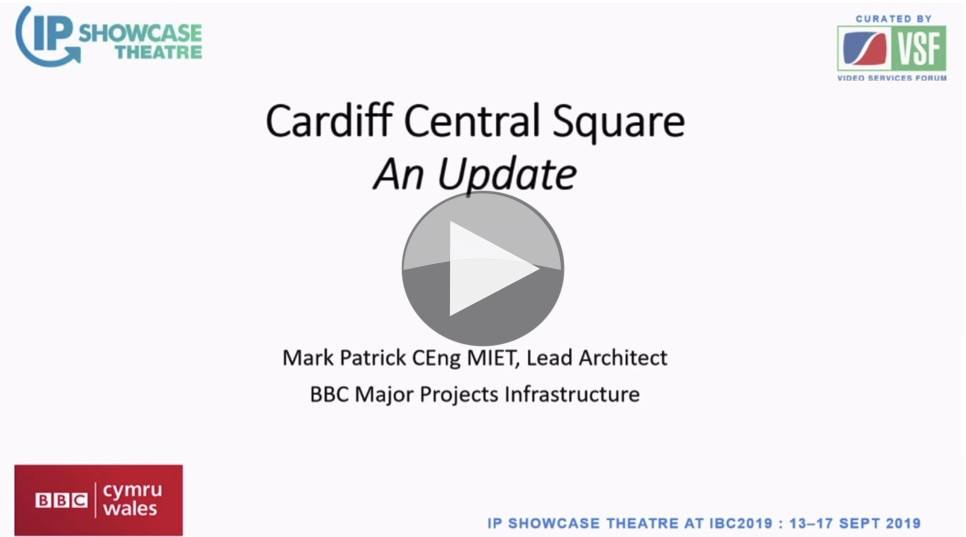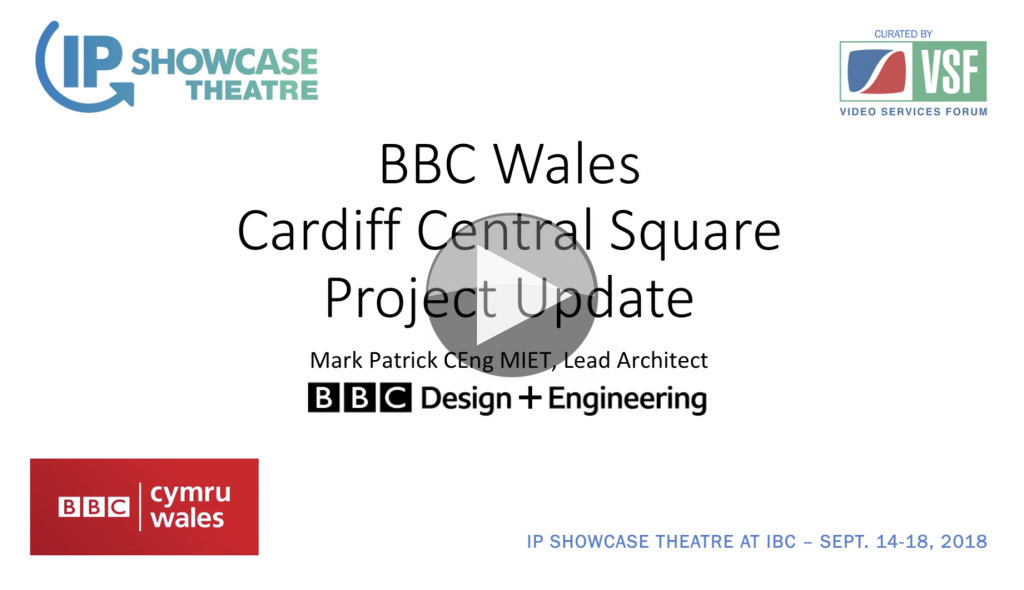Whenever there’s a step change in technology, we need early adopters and moving to SMPTE’s ST 2110 is no exception. Not only do early adopters help show that the path ahead is good, but they often do a lot to beat down the bushes and make the path easier to pass for all that follow. For larger companies whose tech refresh or building move comes at a time when the industry is facing a major technology change, there comes a time when whilst the ground may not be firm ahead, the company can’t justify investing in technology that would soon be out of date or in technology which won’t support the needs of the company in several years’ time. This is just the situation that BBC Cymru Wales found themselves in when it was time to move out of their old property into a purpose-built national HQ in the heart of Cardiff.
In this video from the IP Showcase, Mark Patrick and Dan Ashcroft guide us through ‘whys’ and the ‘hows’ of the relocation project. It’s important to remember that this project was long in the making with the decision on location taking place in 2014 with the technology decisions taking place in 2016 and 2017. The project took an open approach to the IP/SDI question and asked for RFP responses to include a fully-SDI and a fully-IP option. It was clear during the selection process that IP was the way to go not because the solution was cheaper in the short term, but because it was much more future-proof and the costs would come down over time giving a much better total cost of ownership. Don’t forget that the initial costs of HD video equipment were much higher than those now. For more on the pros and cons of SDI, watch ‘Is IP really better than SDI?‘ by Ed Calverly.
Mark and Dan talk through the thinking for the IP choice and their decision to pick a vendor who would be their partner in the project. The theory being that given the standards were still very young, it would be important to work closely to ensure success. In addition to Grass Valley equipment, they chose a Cisco network with Cisco SDN control and operational control by BNCS. The talk references architectures we’ve featured on The Broadcast Knowledge before with Arista’s Gerard Phillips discussing the dual-network spine-leaf architecture chosen and noting the difficulty they had incorporating the Dante network into the 2110 infrastructure and their choice of a third network purely for control traffic.
We often hear about the importance of PTP in a SMPTE ST 2110 network for live production because it is vital to keep all the essences in sync. For more information about the basics of ST 2110 check out this talk by Wes Simpson. PTP is both simple and complex so Mark explains how they’ve approached distributing PTP ensuring that the separate networks, amber and blue, can share PTP grandmasters for resilience.
Other topics covered in the talk include
- Control Methodology
- AES67 and Dante
- Testing equipment
- JT-NM interoperability testing
- Successes and difficulties
Watch now!
Speakers
 |
Mark Patrick Lead Architect, BBC |
 |
Dan Ashcroft Senior Project Manager, BBC |
 |
Moderator: Wes Simpson LearnIPVideo.com |





